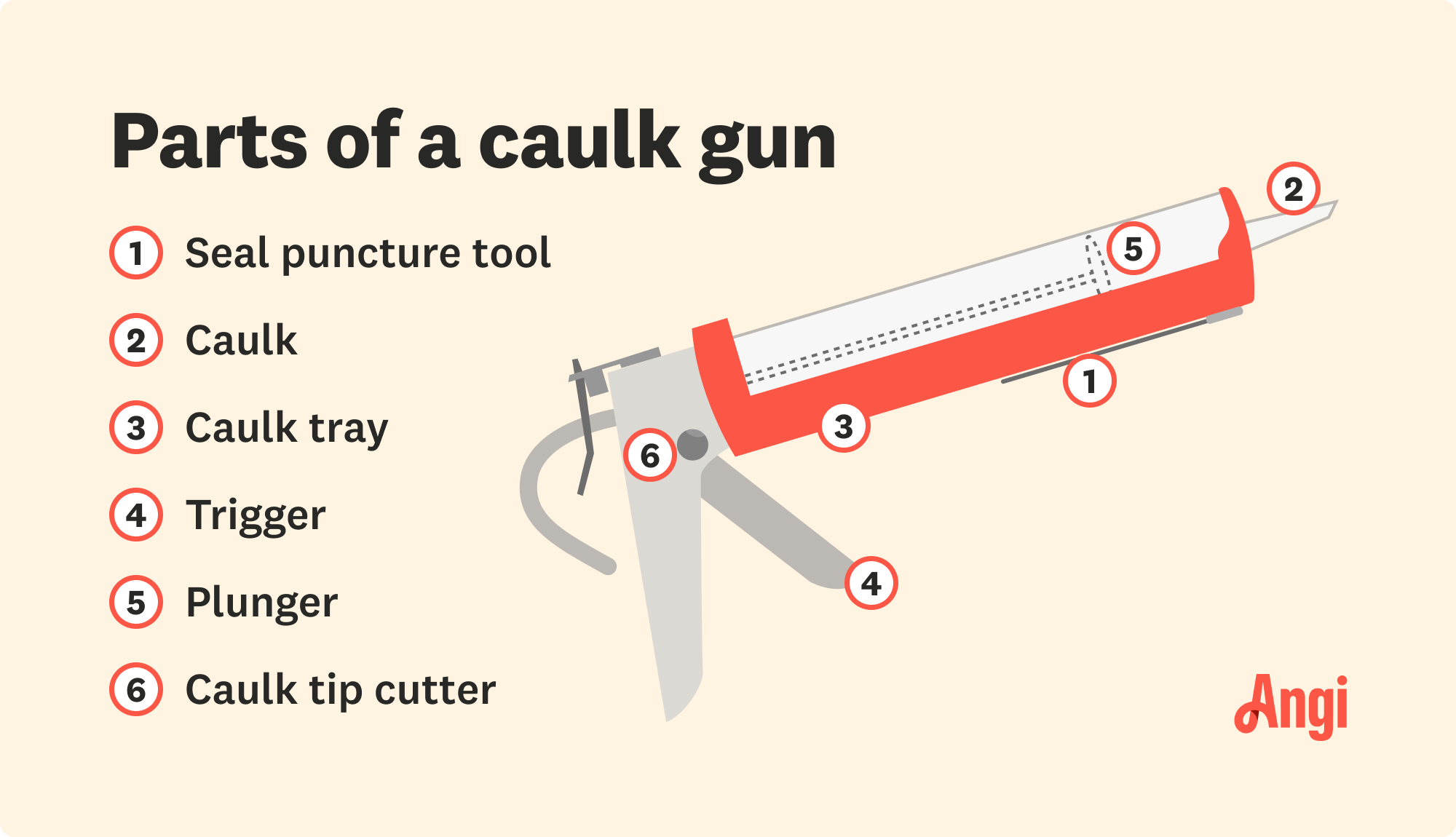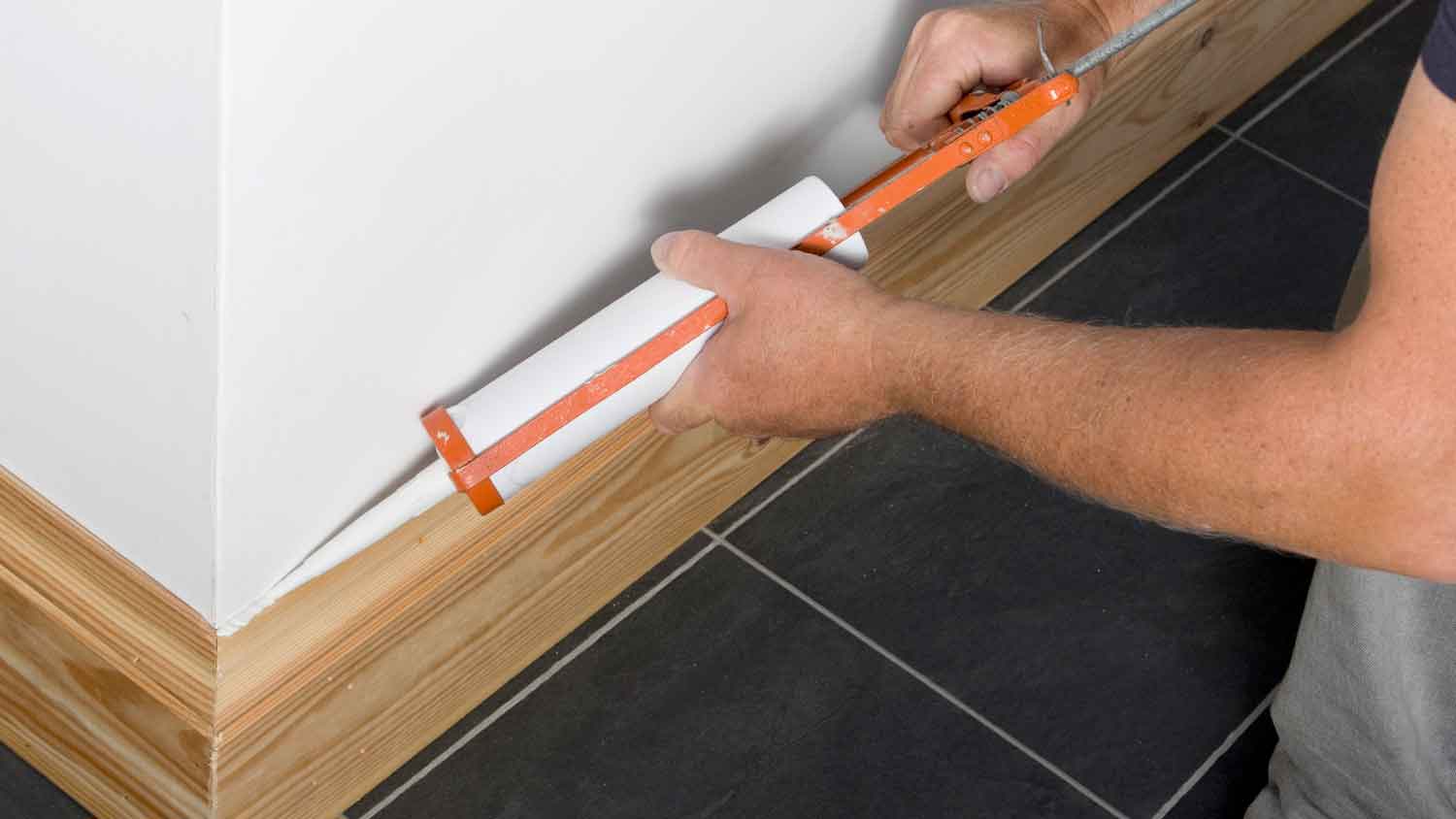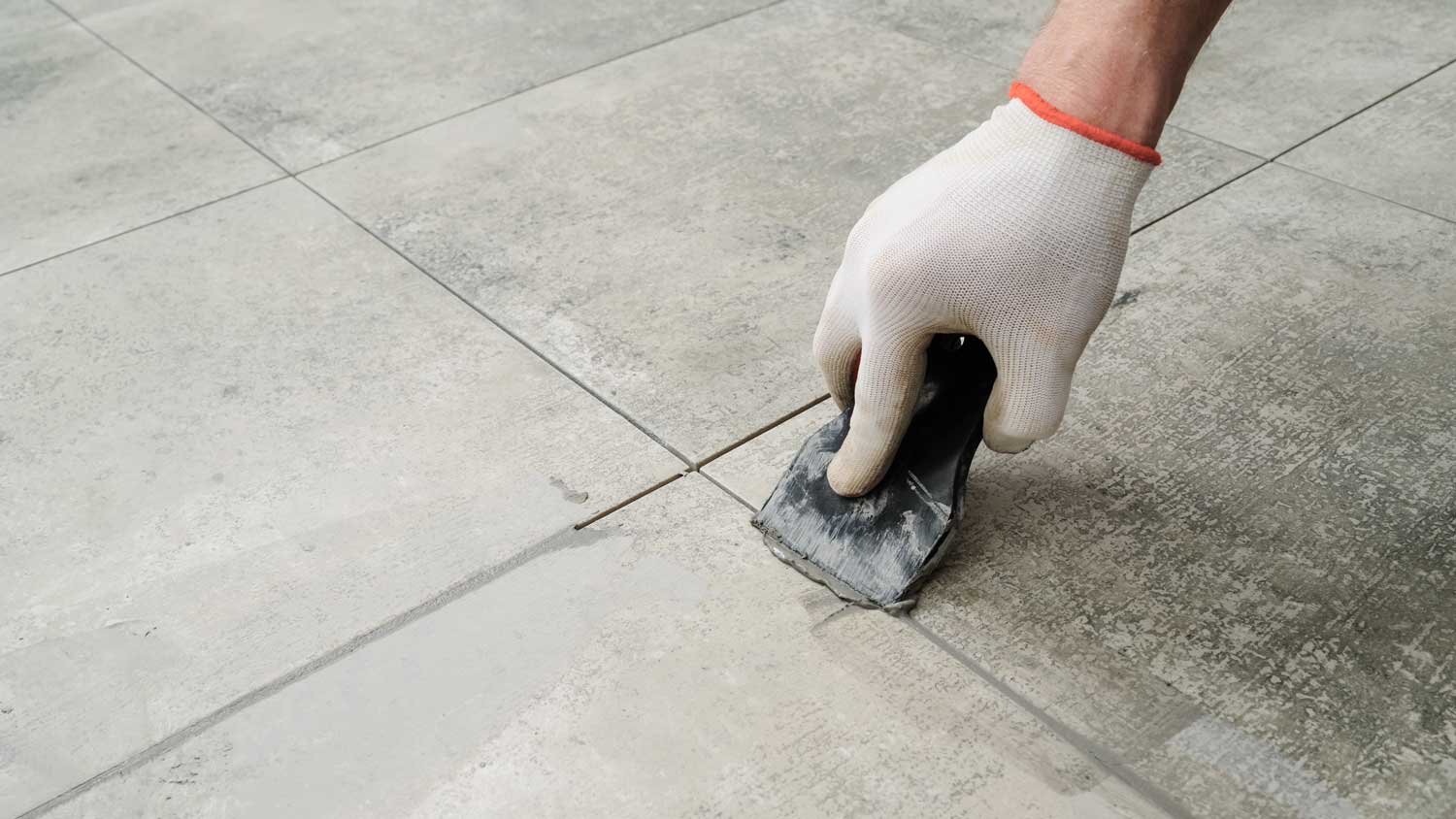
The cost to install travertine tile depends on materials and the size of the project. This guide to travertine tile cost will help you budget accordingly.
Fill gaps, seal cracks, and prevent mold with this multi-purpose material


Caulk is a flexible sealant that fills gaps between different surfaces or materials.
It’s often used on bathtubs, sinks, toilets, and tiled surfaces.
Once applied, caulk prevents air or water from damaging the surrounding materials.
There are multiple types of caulk, including silicone and acrylic latex.
Caulk is similar to sealant, but it’s less elastic and better for stationary surfaces.
If you’re planning a bathroom remodel or kitchen renovation, you’re probably going to go through a few tubes of caulk in the process—but what is caulk, exactly? And how is it different from other materials, like sealant and grout? Let’s look at the basics behind this common building material, including what it is, how much it costs, and where to use it.

Caulk is a flexible substance used to fill gaps or create bonds between different surfaces or building materials on the interior or exterior of your home. It’s commonly applied to windows, doors, and plumbing fixtures (such as bathtubs and sinks) to prevent air leaks and water damage.
It most often comes in a tube that you insert into a caulking gun when you’re ready to apply it. There are also squeezable and pressurized tubes of caulk, which don’t always require a caulking gun.
There are several types of caulk, including:
Acrylic latex caulk
Silicone caulk
Polyurethane-based caulk
Butyl rubber caulk
Each type of caulk is different, and it’s important to choose the right kind based on the project you’re tackling. For example, the best caulk for showers isn’t necessarily going to be the best caulk for baseboards. If you aren’t sure which type you need, reach out to a local caulking company for advice on your specific project.

Caulk is a versatile product that’s effective for indoor and outdoor projects. Some of the most common uses of caulk include:
Sealing drafty windows or doors
Preventing mold growth in showers and tubs
Closing gaps around baseboards or moldings
Patching small holes or cracks in interior walls
Reapplying loose carpet or wallpaper
Repairing roof shingles or flashing
Filling gaps on the exterior of your home to prevent pests from entering
If you hire a pro, the cost of caulk will depend on the size of the area they’re caulking and whether they need to remove old caulk. On average, though, professional caulking costs between $65 and $300 for a bathtub or shower or $50 to $70 per window.
Alternatively, you can save money by learning how to apply caulk yourself. Overall, it’s fairly straightforward (although it’ll take some practice to master the motions), but some caulking projects are more complicated or dangerous than others.
For example, caulking a shower is a DIY-friendly task, but climbing onto your roof to replace loose shingles isn’t quite so simple. For these sorts of specialized or high-risk projects, we recommend calling a handyperson or caulking pro.
If you don’t have much DIY experience, it’s easy to confuse caulk with other materials, like sealant and grout. However, each of these products serves a different purpose, so it’s important to understand which one you’ll need for your job. Here are some of the primary differences between caulk and similar materials.
Caulk and sealant have similar uses and application methods, which explains why the terms are often used interchangeably. However, sealant is more elastic and less rigid than caulk. As a result, sealant is a better option for spaces that experience lots of movement.
Grout is a cement-based material that goes between tiles to prevent them from shifting. When it comes to grout versus caulk, grout is harder than caulk when it dries, making it the better pick for keeping tile floors, walls, and backsplashes in place. On the other hand, caulk is useful for sealing gaps between different materials (for example, a tile wall and countertop).
From average costs to expert advice, get all the answers you need to get your job done.

The cost to install travertine tile depends on materials and the size of the project. This guide to travertine tile cost will help you budget accordingly.

Whether it’s on your floor, walls, or shower, ceramic tile can add style to your space. So, how much does ceramic tile installation cost? Let’s break it down.

Discover the average cost of grout repair, key price factors, and tips to save. Get expert advice to plan your grout repair project with confidence.

Knowing how to grout peel-and-stick tiles can help you achieve a high-end look on a budget. This guide will show you how to do it.

A loose floor tile can be a nuisance or a hazard, but fixing floor tiles may not be as hard as you think. Our DIY guide will show you how to fix loose floor tiles.

Epoxy grout is a durable, resin-based grout that’s easy to maintain. It’s pricier than cement grout, but it could be ideal for your tile installation.